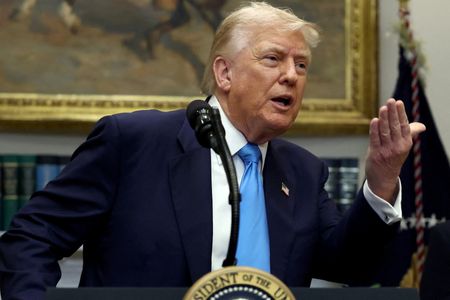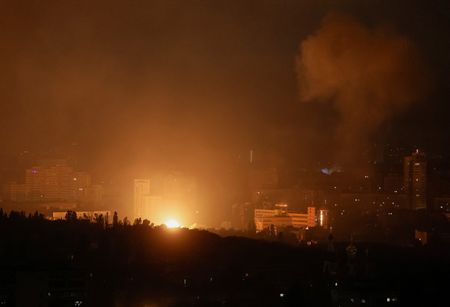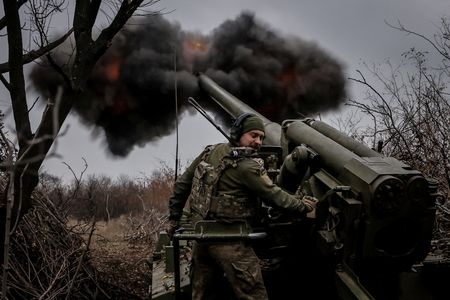WASHINGTON (Reuters) – U.S. President Donald Trump smashed a more than 75-year-old global trading system with a new baseline 10% U.S. tariff on goods from all countries and higher reciprocal tariff rates for countries that his administration says have high barriers to U.S. imports.
Here’s a look at some of the new tariff regime’s key features, as detailed in Trump’s executive order.
HIGH TARIFFS ON MAJOR TRADE PARTNERS
The reciprocal rates are meant to capture policies such as currency manipulation, lax pollution and labor laws, and burdensome regulations that keep U.S. products out of foreign markets.
The European Union will be hit with a 20% U.S. tariff rate, with 46% for Vietnam, 24% for Japan, 25% for South Korea and 26% for India, 32% for Taiwan and 36% for Thailand.
China, which had the largest 2024 trade surplus with the U.S. at $295 billion, will get a 34% reciprocal tariff rate. Treasury Secretary Scott Bessent said this extends to 54% when combined with Trump’s 20% February duties imposed over the U.S. fentanyl overdose crisis. Trump promised a 60% duty on Chinese goods during his 2024 election campaign.
Britain, Brazil and Singapore, which ran trade deficits with the U.S. last year, still got the baseline 10% rate. White House officials said many countries would run larger deficits with the U.S. if their policies were fairer.
But Russia was not on Trump’s tariff list, despite running a $2.5 billion goods trade surplus with the U.S. in 2024 according to the U.S. Trade Representative’s office.
REPRIEVE FOR MEXICO, CANADA
Goods from Canada and Mexico are not currently subject to reciprocal tariffs because Trump’s prior 25% fentanyl-related duties remain in place on their goods, along with 10% for Canadian energy and potash.
But a tariff exemption for goods compliant with the U.S.-Mexico-Canada Agreement on trade will continue indefinitely, providing some welcome relief for U.S. automakers. Trump had previously said the USMCA exemption granted a month ago would expire on Wednesday.
The fentanyl-related tariffs will stay in place until drug trafficking and border migration conditions improve, officials said, but if those are removed, they will be replaced by a 12% duty for imports that are not compliant with USMCA rules of origin.
METALS, AUTOS TARIFFS A DIFFERENT THING
Some tariffs won’t stack on top of the reciprocal duties. Imports that are subject to separate, 25% tariffs under Section 232 of the Trade Act of 1962 will be excluded, including autos and auto parts, steel and aluminum.
This exemption extends to other sectors subject to ongoing or potential Section 232 national security investigations, including copper, lumber, semiconductors, and pharmaceuticals. A forthcoming annex will also enumerate other exempted products, including certain critical minerals, energy and energy products.
IMPLEMENTATION, AUTHORITY
The 10% baseline tariff goes into effect at 12:01 a.m. EDT (0401 GMT) on Saturday, April 5, while the higher, reciprocal tariffs go into effect at the same hour of April 9.
Trump is again invoking the International Emergency Economic Powers Act (IEEPA), the same 1977 law he used to justify his February tariffs on Chinese, Mexican and Canadian goods over fentanyl. Prior to Trump’s current presidency, IEEPA had not been used to impose tariffs, only economic sanctions.
Trump declared a national emergency under IEEPA over the “large and persistent” U.S. global goods trade deficit, which grew by more than 40%, reaching $1.2 trillion in 2024.
“This trade deficit reflects asymmetries in trade relationships that have contributed to the atrophy of domestic production capacity, especially that of the U.S. manufacturing and defense-industrial base,” the executive order said.
ENDING CHINA’S SMALL PACKAGE EXEMPTION
Trump separately signed an executive order that permanently ends the duty-free “de minimis” exemption for packages from China and Hong Kong valued at under $800, a loophole exploited by Chinese e-commerce giants including Shein and PDD Holdings’ Temu to skirt prior U.S. tariffs by shipping direct to consumers.
Trump’s administration tried to close the de minimis exemption earlier this year, blaming it for allowing fentanyl precursor chemicals to enter the U.S. unscreened, an assertion verified by a Reuters investigation last year.
But difficulties in screening packages piling up at airports and collecting duties on them on short notice prompted the administration to delay the exemption until the Commerce Department and Customs and Border Protection could set up adequate measures. Reuters first reported the decision to fully close the loophole earlier on Wednesday. (This story has been corrected to fix Vietnam’s tariff rate to 46% from 45% in paragraph 4)
(Reporting by David Lawder; Editing by Lincoln Feast.)









